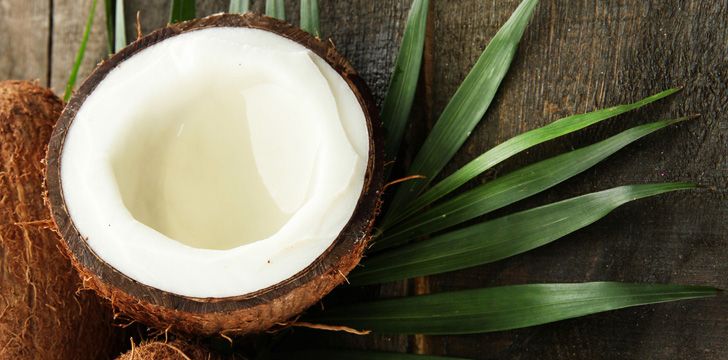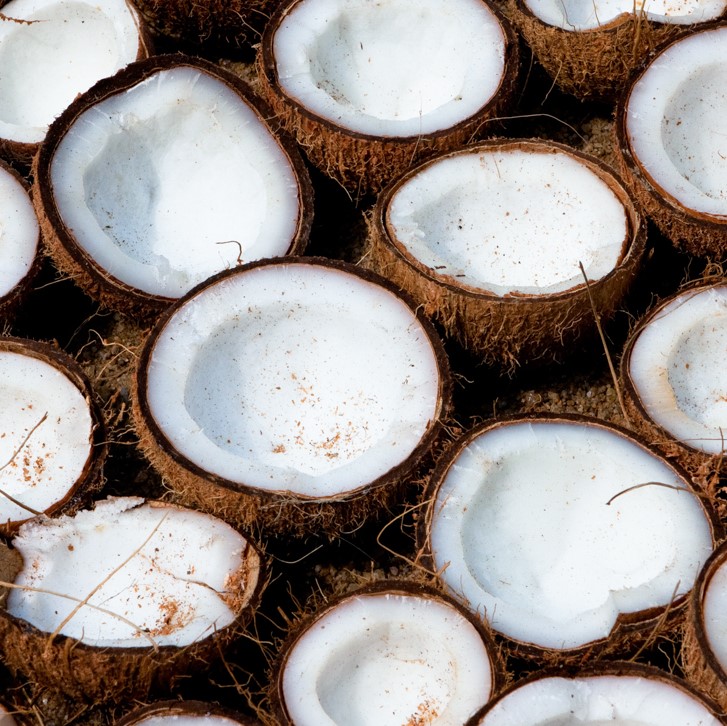
Welt-Kokos-Tag: Der Welt-Kokos-Tag wird am 2. September 2020 begangen, um ein Bewusstsein für die Bedeutung der Kokosnuss auf der ganzen Welt zu schaffen. Der Welt-Kokosnuss-Tag wird jedes Jahr von der Asian and Pacific Coconut Community (APCC) und ihren Mitgliedsstaaten gefeiert. Weitere Informationen über die Geschichte des Weltko coconut Day, APCC, gesundheitliche Vorteile von Kokosnuss aus diesem Artikel.
Welt-Kokos-Tag 2020

Der Welt-Kokos-Tag wird jedes Jahr am 2. September von der Asian and Pacific Coconut Community (APCC) begangen. Der Weltko coconut Day 2020 zielt darauf ab, Investitionen zu fördern und die Entwicklung der Kokosnussindustrie in den Mitgliedsländern der APCC zu fördern. Der Welt-Kokosnuss-Tag wird gefeiert, um den Menschen verständlich zu machen, dass Kokosnuss eine wichtige Rolle bei der Armutsbekämpfung spielt.

Was ist die Geschichte des Welt-Kokosnuss-Tages?

Der Welt-Kokos-Tag wurde im Jahr 2009 ins Leben gerufen. Der Tag wird begangen, um an den Gründungstag der APCC zu erinnern, der unter der Schirmherrschaft der Wirtschafts- und Sozialkommission der Vereinten Nationen für Asien und den Pazifik (UN-ESCAP) steht. Der Welt-Kokosnuss-Tag wird begangen, um die Bedeutung und Verwendung von Kokosnüssen hervorzuheben. Der Welt-Kokosnuss-Tag ist eine Gelegenheit, die Politik zu interpretieren und den Aktionsplan in diesem Sektor auszudrücken.
APCC ist eine zwischenstaatliche Organisation, die aus 18 Mitgliedsländern besteht, die beauftragt sind, Kokosnussentwicklungsaktivitäten des asiatisch-pazifischen Raums zu fördern, zu koordinieren und zu harmonisieren. Mehrere große Kokosnussanbauländer, darunter Indien, sind Mitglieder der APCC. Der Hauptsitz befindet sich in Jakarta, Indonesien.
APCC
Typ: Zwischenstaatliche Organisation
Hauptsitz: Jakarta, Indonesien
Mitgliedschaft: 18 Länder
Kokosnuss

Kokosnuss gehört zu Arecaceae, der Palmenfamilie. Kokosnuss ist die einzige lebende Art der Gattung Cocos. Es ist eine reife Frucht der Cocos nucifera Palme. Es ist ein unverzichtbares Nahrungsmittel für die Menschen in Süd- und Südostasien und den pazifischen Inseln. Die Kokospalme wächst gut in tropischen Klimazonen, da sie feuchten, sandigen, gut durchlässigen Boden benötigt. Sie gedeiht gut in den salzreichen Küstenregionen. Die Palm Coconut kann mehr als 100 Fuß hoch werden. Die Lebensdauer von Palm Coconut beträgt etwa 75 bis 100 Jahre.
Anfangs, nach dem Pflanzen, dauert es 4-5 Jahre, um mit der ersten Produktion zu beginnen. Eine einzelne Kokospalme hat die Fähigkeit, 20-150 reife Nüsse in einem Jahr zu liefern. Die äußere Schale ist hellgrün. Wenn die Nuss reift, wird sie trocken und wird grau. Die Schale oder der Exokarp ist etwa 1-2 Zoll dick und besteht aus zähen Fasern. Unter der Schale befindet sich Kern-Endosperm, eine holzige Schale, die inneres essbares Fleisch umschließt. Die geerntete reife Kokosnussfrucht enthält eine gewisse Menge an süßem Wasser in ihrer zentralen Hohlhöhle, die vom weißen Fleisch umgeben ist. das Endosperm. Die Frucht mit ihrer Schale, kern (Fleisch) und Wasser bilden zusammen eine Kokosnuss.
Was sind die gesundheitlichen Vorteile von Kokosnuss?
/coconut_annotated-9c406299833d4ce0a416516e24b8ebc1.jpg)
Cocunt ist ein komplettes Lebensmittel, das reich an Vitaminen, Kalorien und Mineralien ist. Die verschiedenen gesundheitlichen Vorteile von Kokosnüssen sind unten aufgeführt:
A coconut carrying 400 g edible meat and around 30-150 ml of water holds all the daily-required essential including minerals, vitamins, and energy of an average-sized individual.
The 100 g kernel holds 354 calories.
The meat of the coconut is disproportionately high in saturated fats when compared to other common edible nuts.
The lauric acid, a saturated fatty acid in the coconut, increases good-high-density lipoprotein (HDL) cholesterol levels in the blood. It is also good for coronary arteries by preventing vessel blockage.
Coconut water contains simple sugar, electrolytes, minerals, and bioactive compounds like cytokinin, and enzymes such as polymerases, acid phosphatase, catalase, dehydrogenase, peroxidase, etc. The enzymes help in metabolism and digestion.
Coconut oil is commonly extracted from Copra or dry kernel. The oil is an excellent emollient agent. It can be used used in cooking, applied over the scalp as hair nourishment, employed in pharmacy and medicines.
Coconut kernel is an excellent source of minerals such as copper, calcium, iron, manganese, magnesium, and zinc.
Coconut is a source of B-complex vitamins such as riboflavin, folates, niacin, thiamin, and pyridoxine.
Wie man den Welt-Kokosnuss-Tag feiert

Der Welt-Kokosnuss-Tag wird gefeiert, indem das Bewusstsein für die Gesundheit und die kommerziellen Vorteile von Kokosnuss erhöht wird. Gefeierte Kokosnuss, die seit Millionen von Jahren in tropischen Regionen gepflanzt wurde. An diesem Tag feiert die ganze Welt eines der gesündesten Lebensmittel der Natur. In Indien feiert das Coconut Development Board den World Coconut Day.
- On this day, crack open a coconut, if you have never done it. It will be a lot of fun to crack into a real coconut.
- Cook special coconut-based food and serve it to your loved ones.
- You can also throw a party, and provide coconut based dishes and drinks.
- Post and share your World Coconut Day celebrations on social media using the hashtag #WorldCoconutDay.
Kokosnuss – Wissenswertes

Coconut is be used as a flotation device.
In Asian and Pacific Ocean cultures the coconut figures in creation stories and myths.
Coconut trees can’t be grown away from the shore without human beings transporting it.
Other than India, ancient coconut fossils have been found in Australia and Columbia.
It is said that the coconut fruit can travel up to 100 days on the ocean’s tide and still germinate.
Over 100 species of coconut trees are present. It includes dwarf varieties.
Coconut used to be spelled “cocoanut.”
In the Maldives, Coconut is in the nation’s coat of arms and is the national tree.
Coconut is used in religious ceremonies in India. It is prominent in the Hindu religion.
The coconut tree contains both male and female flowers but doesn’t self-pollinate.
The tree has an unusually shallow, fibrous root system that lacks a tap root and root hairs.
The trunk of a coconut tree is used in the construction of bridges, houses, and boats.
In the 1970s, General Marcos of the Philippines built a palace from coconut timber.
Sap from the unopened coconut flower can be made into “coconut vodka.”
Coconut Day – Wünsche

May the God of the sea give all the happiness to you and your family. Let’s celebrate this healthy festival of coconut day.
On this coconut-y occasion, I wish you a bright, happy, and world coconut day.
Let us spread love & happiness on this precious day of world coconut day.
Special Wishes to you and your family on World Coconut Day. Let us offer prayers to God of the sea to bless every people on earth.
Let’s spread kindness and love all around to keep a healthy environment around us. – Happy World Coconut Day!
Welt-Kokos-Tag – FAQ
1. Wann wird der National Coconut Day gefeiert?
Der National Coconut Day wird jedes Jahr am 26. Juni gefeiert. Der National Coconut Day wird gefeiert, um das Bewusstsein für die Vorteile von Kokosnuss zu schärfen.
2. Wann wurde das Coconut Development Board (CDB) gegründet?
Das Coconut Development Board (CDB) wurde am 12. Januar 1981 gegründet. Es ist ein gesetzliches Organ, das unter dem Landwirtschaftsministerium der indischen Regierung für die integrierte Entwicklung von Kokosnuss- und Kokosnussprodukten eingerichtet wurde.
3. Was ist das Thema des World Coconut Day 2019?
Das Thema des World Coconut Day 2019 lautet “Coconut for Family Wellness”. Das Thema zielte darauf ab, die Kokosnussentwicklungsaktivitäten des asiatisch-pazifischen Raums zu fördern, zu koordinieren und zu harmonisieren.
WARUM WIR DEN WORLD COCONUT DAY LIEBEN

- There are so many ways to enjoy coconuts Odds are that you have recently experienced coconut, in some form or another. If you haven’t had a smoothie or a cocktail or an entree made with coconut milk, coconut cream, coconut water, coconut oil, or the fruit itself, you may have washed your face, shampooed your hair, moisturized, or exfoliated with a coconut by-product. Coconut shells can be used as bowls, to make buttons, and to create the sound effect of horses’ hooves.
- Coconuts are delicious Coconut products add a scrumptious creaminess to any drink or dish. A smoothie takes on a tropical flair, while even the simplest curry gets depth from coconut milk. Raw coconut makes a perfect snack, and lends just the right amount of chewiness to baked goods. And unless your coconut has added sugar, it will work well in savory applications as well as sweet ones.
- You guessed it — coconuts are nutritious. Is coconut the new kale? Well, probably not, but coconuts are high in iron, magnesium, fiber and protein. Coconut water provides potassium and sodium. In moderate amounts, coconut oil — a medium-chain fatty acid — is not harmful, although the jury is out on whether or not it’s helpful. And coconut products play prominent roles in gluten-free, soy-free, and vegan diets.



